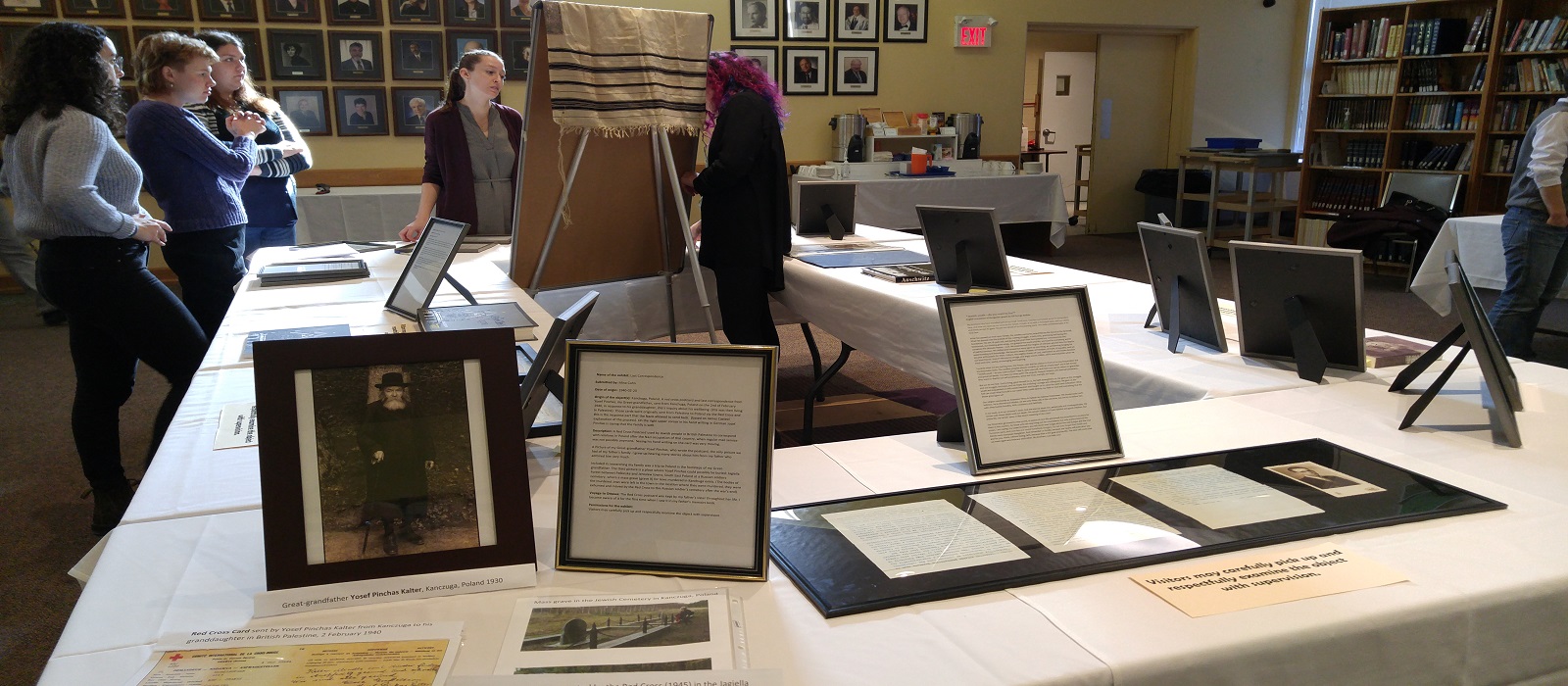Ottawa Holocaust Education Month Pop-Up Museum November 4-5, 2018
In honour of the 2018 Holocaust Education Month, the Zelikovitz Centre for Jewish Studies, Temple Israel Religious School, the Ottawa Jewish Archives, and the Centre for Holocaust Education and Scholarship collaborated to create a Pop-Up Museum, where local Ottawa families shared their story of their family’s experience of the Holocaust through objects.
What is a Pop-Up Museum?
A Pop-Up Museum is a temporary exhibit created by the people who show up to participate. This Pop-Up Museum was “live” and open to the public in November of 2018. In late 2020, it will be available online as a virtual museum. Stay tuned!
Why a Pop-Up Museum?
Pop-Up Museums are a grass-roots way for communities to share stories through objects. As Robert Ehrenreich discussed in his public lecture on November 5, 2018, the enormity of the tragedy of the Holocaust is overwhelming and objects allow us to remember those who suffered and learn about their history by focusing on their individual stories.
Who could participate?
Anyone who owns an object with a family connection to the Holocaust was able to submit their object for the Pop-Up Museum. The focus of the Pop-Up Museum was to remember the victims and educate about the Holocaust. No objects which deny or minimize the Holocaust were accepted.
When was the museum be open to the public?
The Pop-Up Museum was “live” and open to the public on November 4, 2018, 12:30 p.m – 4 p.m. and November 5, 2018, 6:30 p.m.- 7:15 pm, prior to the public lecture on material culture and the Holocaust.
Where was the Pop-Up Museum held? Temple Israel, 1301 Prince of Wales Dr., Ottawa, ON K2C 1N2
What sorts of objects are appropriate?
The object should have a connection to your family’s experience of the Holocaust. Objects might be large or small, they might have an obvious connection or might need an explanation. They might be from before the war (signaling what was lost), during the war, or they might be from after the war (speaking to survival).
What happened on November 4-5?
We will ask you to bring your object to be displayed at Temple Israel on November 4 from 9:30 a.m. – 12 p.m. (You may also bring the item in advance).
As you arrive, your object will be “checked in” against our list and your object will receive a sticker that identifies who owns it and their contact info, so that every object will be returned safely to the owner. The object will be matched with a printout of the information you submitted online about the object and both the object and the description will be displayed together on tables.
During the Pop-Up Museum, we encourage you to speak to visitors about your object. Local survivors, children of survivors, and scholars will also be on-hand to speak to visitors about the objects and the history of the Holocaust.
Public Lecture – November 5
In addition to the public opening on Sunday, the Pop-Up Museum will was also open from 6:00-7:15 p.m. on November 5 and was followed by a public lecture (suitable for adults and mature teens) at 7:30 p.m.
Title: “Let the Artefacts Speak: Returning Humanity to Holocaust Victims”
Lecture presented by: Dr. Robert Ehrenreich of the United States Holocaust Memorial Museum
Description: Six million Jews were murdered during the Holocaust. The number is staggering. It is the equivalent of almost seven Ottawas. How can we represent the magnitude of this crime without reducing the victims to mere numbers? How can we show, as Holocaust survivor Abel Herzberg said so well, that “There were not six million Jews murdered; there was one murder, six million times”? How do we convey that these were real people with real lives and families. In this presentation, I will discuss how personal items can turn the huge numbers of victims back into individuals and return their humanity, based on three case-studies: personal items discovered near shooting pits in Ukraine; damaged photographs from Poland; and a piece of mica from the Theresienstadt Glimmerwerke (mica works).
At the end of the evening on November 5, all objects were taken home. Photos of these objects and their stories will be shared in a virtual on-line museum, with permission, hosted by the Zelikovitz Centre for Jewish Studies.
How should I prepare my object for viewing?
Please think carefully about your object in the setting of a pop up museum. Most objects will be displayed on tables. Consider how you can protect your object (in a frame or box, on a stand etc.) and how you will transport it to and from the pop up museum. Please let us know if you need to bring the object in advance and ensure that it is well labeled and safely packaged. Note that most objects will stay at Temple (locked in an office) overnight from Sunday until Monday night. If an object is particularly valuable or fragile consider taking it home at the end of the Sunday viewing and bring it back for the Monday viewing. If you have concerns, need advice, or need some special set up for your object please contact Sue Potechin at Temple tirs@templeisraelottawa.ca.
How do I participate?
Those wanting to submit an artifact to the HEM Pop-Up Museum were asked to fill out a submission form. The request for Pop-Up Museum submissions has now ended, but you may submit a photo of an object to our ZC/CHES Holocaust Virtual Museum by clicking on this link: Submit your artifact to the Holocaust Virtual Museum.
If you have difficulty submitting the form or need assistance, please contact the Zelikovitz Centre for Jewish studies by phone or by email and someone will contact you within 3 working days.
Tel: 613-520-2600, ext. 1320
Email: jewish.studies@carleton.ca
The deadline for submission to participate in the HEM Pop-Up Museum was October 15, 2018
